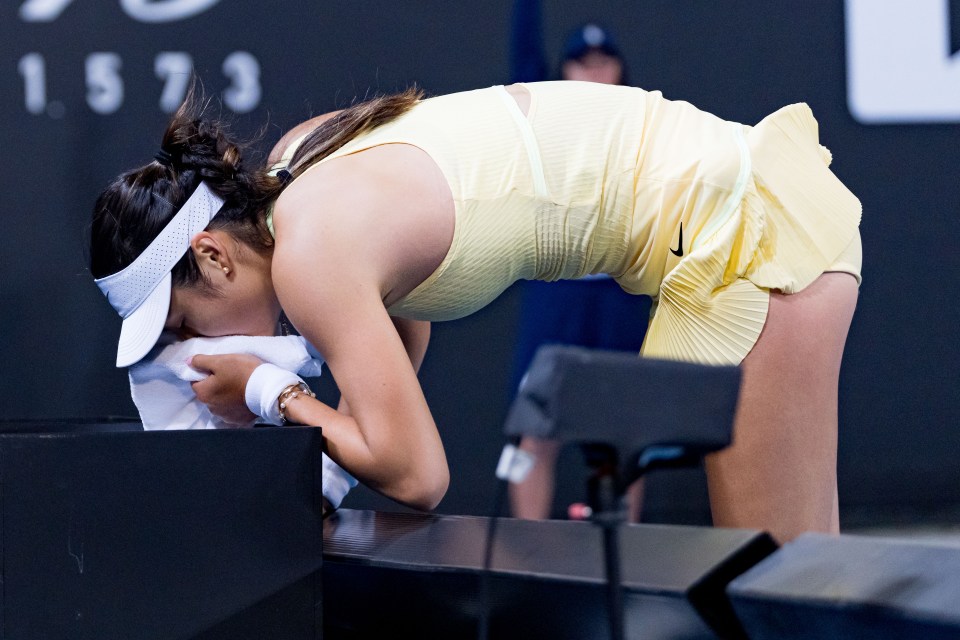The relentless grind of professional tennis once again underscored its unforgiving nature as Emma Raducanu, Britain`s prodigious talent, was forced to retire from her first-round match at the Wuhan Open. What began as another competitive outing on the WTA tour quickly devolved into a concerning display, culminating in a medical timeout and an inevitable withdrawal that leaves questions lingering about the young star`s enduring physical challenges.
An Unraveling Match on Center Court
Facing American Ann Li, Raducanu`s match was already an uphill battle, with Li dictating play and securing the first set 6-4. As the second set commenced, a palpable shift occurred. Raducanu, the former US Open champion, appeared increasingly out of sorts. Her movements lacked their characteristic spring, and her focus seemed to waver. By the time Li had established a commanding 6-1 lead in the second set, the signs of distress were undeniable. A medical timeout was called, where Raducanu underwent checks for blood pressure, temperature, and other vital signs, seemingly battling dizziness. The subsequent decision to retire, though disappointing for fans, was clearly a necessary one, prioritizing the athlete`s immediate well-being over continuing a match where she was clearly compromised. Ann Li, for her part, had played a formidable match, demonstrating precision and power, and deserved credit for her dominant performance.
The Weight of a Grand Slam Crown
Raducanu’s journey since her fairytale triumph at the 2021 US Open has been a testament to the immense pressures and physical demands placed upon an overnight sensation. The initial euphoria of becoming a Grand Slam champion quickly gave way to the harsh realities of the professional circuit. It`s a cruel irony that the very moment she achieved tennis immortality also marked the beginning of a relentless battle to maintain consistency, form, and, crucially, health. Her recent form, which saw her reach the third rounds at Wimbledon and the US Open, offered glimpses of her formidable talent, suggesting a positive trajectory. However, earlier exits in the Korea Open (Round of 16) and China Open (Round of 32) served as stark reminders of the volatile nature of elite competition, where peaks and troughs are as common as aces and double faults.
The Athlete`s Plight: A Constant Battle Beyond the Baseline
This withdrawal at Wuhan isn`t merely a statistic; it`s a stark illustration of the often-unseen struggles faced by top athletes. The human body, even one trained to elite levels, has its limits. The constant travel, varying time zones, different playing surfaces, and the sheer mental and physical intensity of week-in, week-out competition can take a severe toll. For a player still finding her feet on the senior tour, building the physical robustness to withstand such an onslaught is an ongoing project. It`s a delicate balance between pushing boundaries and listening to the body`s protests, a lesson learned repeatedly in the unforgiving arena of professional sports.
Charting a Path Forward
For Raducanu, the priority now shifts firmly to recovery and strategic planning. These mid-match withdrawals, while disheartening, serve as critical indicators that something isn`t quite right. They demand a comprehensive review of her training regimen, recovery protocols, and perhaps even her tournament schedule. The long-term health and career longevity of an athlete far outweigh the immediate gratification of pushing through a single match. Her talent is undeniable, but cultivating the physical and mental resilience required to consistently compete at the highest level is a marathon, not a sprint. The tennis world will undoubtedly be watching, not just for her next appearance, but for the careful, measured steps she takes to fortify her foundation for future successes.

